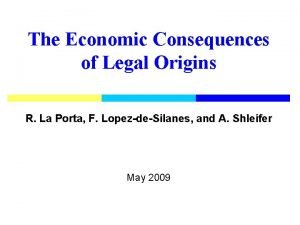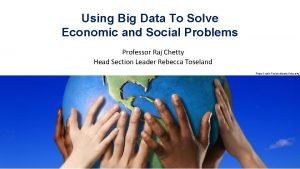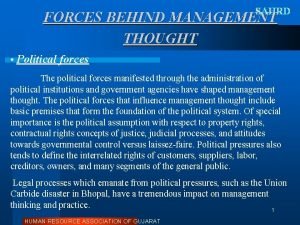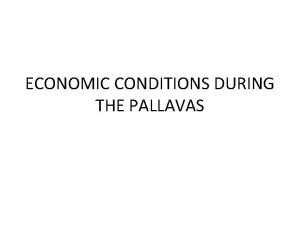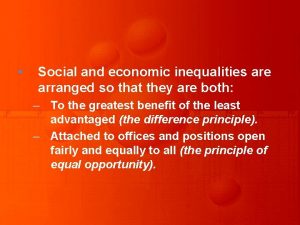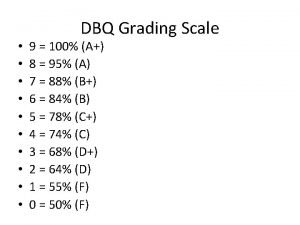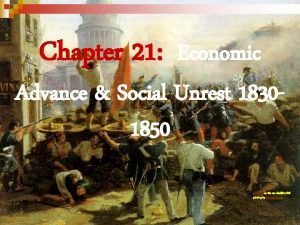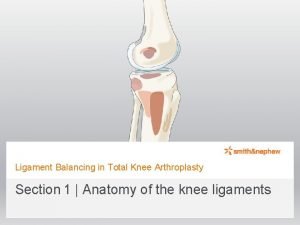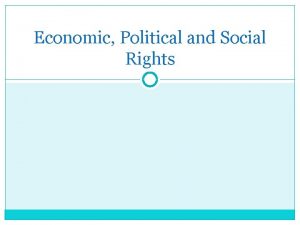Section1 The Origins of ProgressivismPolitical economic and social











- Slides: 11

Section-1 The Origins of Progressivism-Political, economic, and social change in late 19 th century America leads to broad progressive reforms.

Section-1 The Origins of Progressivism Four Goals of Progressivism Concerns of Progressives • Early 1900 s, middle-class reformers address problems of 1890 s • Different reform efforts collectively called progressive movement • Reformers aim to restore economic opportunity, correct injustice by: — 1. protecting social welfare, 2. promoting moral improvement — 3. creating economic reform, 4. fostering efficiency Continued…

Section-1 Four Goals of Progressivism {continued} Protecting Social Welfare • Social Gospel, settlement houses inspire other reform groups • YMCA’s and Salvation Army organization are formed • Florence Kelley, political activist, advocate for women, children — helps pass law prohibiting child labor, limiting women’s hours in Illinois

Four Goals of Progressivism {continued Promoting Moral Improvement • Some feel poor should uplift selves by improving own behavior • Prohibition—banning of alcoholic drinks • Woman’s Christian Temperance Union(WCTU) spearheads prohibition crusade • Prohibition video: http: //www. history. com/topics/prohibition

Four Goals of Progressivism {continued “Competition was natural enough at one time, but do you think you are competing today? Many of you think you are. Against whom? Against Rockefeller? About as I would if I had a wheelbarrow and competed with the Santa Fe from here to Kansas City. ” Eugene Debs- 1908 Creating Economic Reform • 1893 panic prompts doubts about capitalism; many become socialists • These Socailists are led by Eugene Debs • Socialists believe in: -government should own all industries and divide the profits among those who actually created the products. -believed too much wealth in hands of upper class people. • Muckrakers—journalists who expose corruption in politics, business

Section-1 Four Goals of Progressivism {continued} Fostering Efficiency • Many use experts, science to make society, workplace more efficient • Louis D. Brandeis uses social scientists’ data in trial • Scientific management—time and motion studies applied to workplace • Assembly lines speed up production, make people work like machines — cause high worker turnover – Theory of Scientific management made popular by a man named Frederick Winslow Taylor- Sci. Management comes to be known as “Taylorism”

Section-1 Cleaning Up Local Government Reforming Local Government. Big City governments were run by political machines (Remember Boss Tweed in NYC) • Reformers try to make government efficient, responsive to voters • Some cities adopt government by commission of experts • Many use council-manager: people elect council that appoints manager Reform Mayors • Hazen Pingree of Detroit tackles taxes, transit fares, corruption • Socialist Tom Johnson of Cleveland fights corrupt utility companies

Section-1 Reform at the State Level Reform Governors • Governors push states to pass laws to regulate large businesses • Robert M. La Follette is 3 -term governor, then senator of Wisconsin — attacks big business, particularly the railroad industry Fight Against Child Labor • Child workers get lower wages, small hands handle small parts better — families need children’s wages • National Child Labor Committee gathers evidence of harsh conditions • Labor unions argue children’s wages lower all wages • Groups press government to ban child labor, cut hours • Child Labor Video: labor Continued… http: //www. history. com/topics/labor/videos/the-fight-to-end-child-

Section-1 Reform at the State Level {continued} Efforts to Limit Working Hours • Louis Brandies, was a lawyer who fought to shorten work days. • Muller v. Oregon—Court upholds limiting women to 10 -hour workday • Bunting v. Oregon—upholds 10 -hour workday for men • Reformers win workers’ compensation for families of injured, killed, • Better health benefits and things like disabillity insurance start to prop up for the first time Continued…

Section-1 Reform at the State Level {continued} Reforming Elections • Oregon adopts secret ballot, initiative, referendum, recall • Initiative—bill proposed by people, not lawmakers, put on ballots • Referendum—voters, not legislature, decide if initiative becomes law • Recall—voters remove elected official through early election • Primaries allow voters, not party machines, to choose candidates Direct Election of Senators • Seventeenth Amendment permits popular election of senators

Conclusion • These early days of the progressive movement led to improvements in labor conditions and in the fairness of elections at the local, state, and national levels • As the progressive movement grew, another group of people started to gain momentum; Women. • Go to page 312 and complete question 2 under the main idea questions.
 The economic consequences of legal origins
The economic consequences of legal origins Economic growth and development
Economic growth and development Economic growth vs economic development
Economic growth vs economic development Chapter 1 lesson 2 our economic choices worksheet answers
Chapter 1 lesson 2 our economic choices worksheet answers Social thinking adalah
Social thinking adalah Social thinking social influence social relations
Social thinking social influence social relations Using big data to solve economic and social problems
Using big data to solve economic and social problems 3 forces behind management thought
3 forces behind management thought Social and economic condition of pallavas
Social and economic condition of pallavas Social and economic inequalities are to be arranged
Social and economic inequalities are to be arranged Social and economic effects of the global flow of silver
Social and economic effects of the global flow of silver Giuseppe mazzini
Giuseppe mazzini
